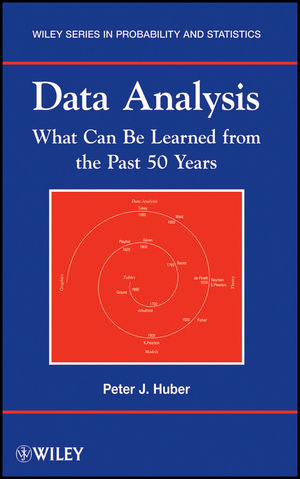Data Analysis: What Can Be Learned From the Past 50 YearsISBN: 978-1-118-01064-8
Hardcover
234 pages
April 2011
 This is a Print-on-Demand title. It will be printed specifically to fill your order. Please allow an additional 10-15 days delivery time. The book is not returnable.
|
||||||
1 What is Data Analysis?
1.1 Tukey's 1962 paper.
1.2 The Path of Statistics.
2 Strategy Issues in Data Analysis.
2.1 Strategy in Data Analysis.
2.2 Philosophical issues.
2.3 Issues of size.
2.4 Strategic planning.
2.5 The stages of data analysis.
2.6 Tools required for strategy reasons.
3 Massive Data Sets.
3.1 Introduction.
3.2 Disclosure: Personal experiences.
3.3 What is i massive? A classification of size.
3.4 Obstacles to scaling.
3.5 On the structure of large data sets.
3.6 Data base management and related issues.
3.7 The stages of a data analysis.
3.8 Examples and some thoughts on strategy.
3.9 Volume reduction.
3.10 Supercomputers and software challenges.
3.11 Summary of conclusions.
4 Languages for Data Analysis.
4.1 Goals and purposes.
4.2 Natural languages and computing languages.
4.3 Interface issues.
4.4 Miscellaneous issues.
4.5 Requirements for a general purpose immediate language.
5 Approximate Models.
5.1 Models.
5.2 Bayesian modeling.
5.3 Mathematical statistics and approximate models.
5.4 Statistical significance and physical relevance.
5.5 Judicious use of a wrong model.
5.6 Composite models.
5.7 Modeling the length of day.
5.8 The role of simulation.
5.9 Summary of conclusions.
6 Pitfalls.
6.1 Simpson's paradox.
6.2 Missing data.
6.3 Regression of Y on X or of X on Y.
7 Create order in data.
7.1 General considerations.
7.2 Principal component methods.
7.3 Multidimensional scaling.
7.4 Correspondence analysis.
7.5 Multidimensional scaling vs. Correspondence analysis.
8 More case studies.
8.1 A nutshell example.
8.2 Shape invariant modeling.
8.3 Comparison of point configurations.
8.4 Notes on numerical optimization.
References.
Index.



